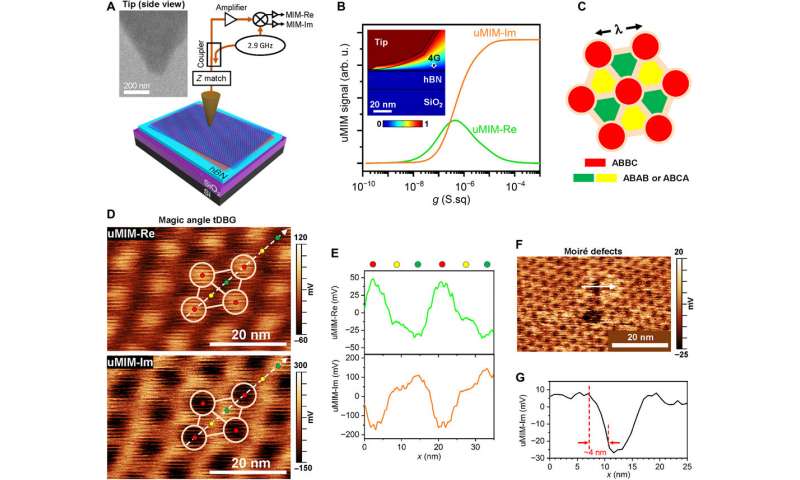New periodic structures known as moiré lattices can be
observed in two-dimensional (2-D) heterostructures containing
layers with slightly different lattice vectors, which can in turn
support new topological phenomena. It is therefore important to
obtain high-resolution imaging of these moiré lattices and
superstructures to understand the emerging physics. In a new report
now published in Science Advances, Kyunghoon Lee and a team of
scientists report the imaging process to view moiré lattices and
superstructures in graphene-based samples under ambient conditions
using scanning microwave impedance microscopy with
ultrahigh-resolution implementation. While the probe tip of the
device maintained a gross radius of 100 nm, the research team
achieved a spatial resolution better than 5 nm. This setup allowed
direct visualization of moiré lattices and the composite
super-moiré. The researchers also showed the artificial synthesis
of new superstructures arising from the interplay between diverse
layers.
Two dimensional heterostructures composed of layers with
slightly different lattice vectors



